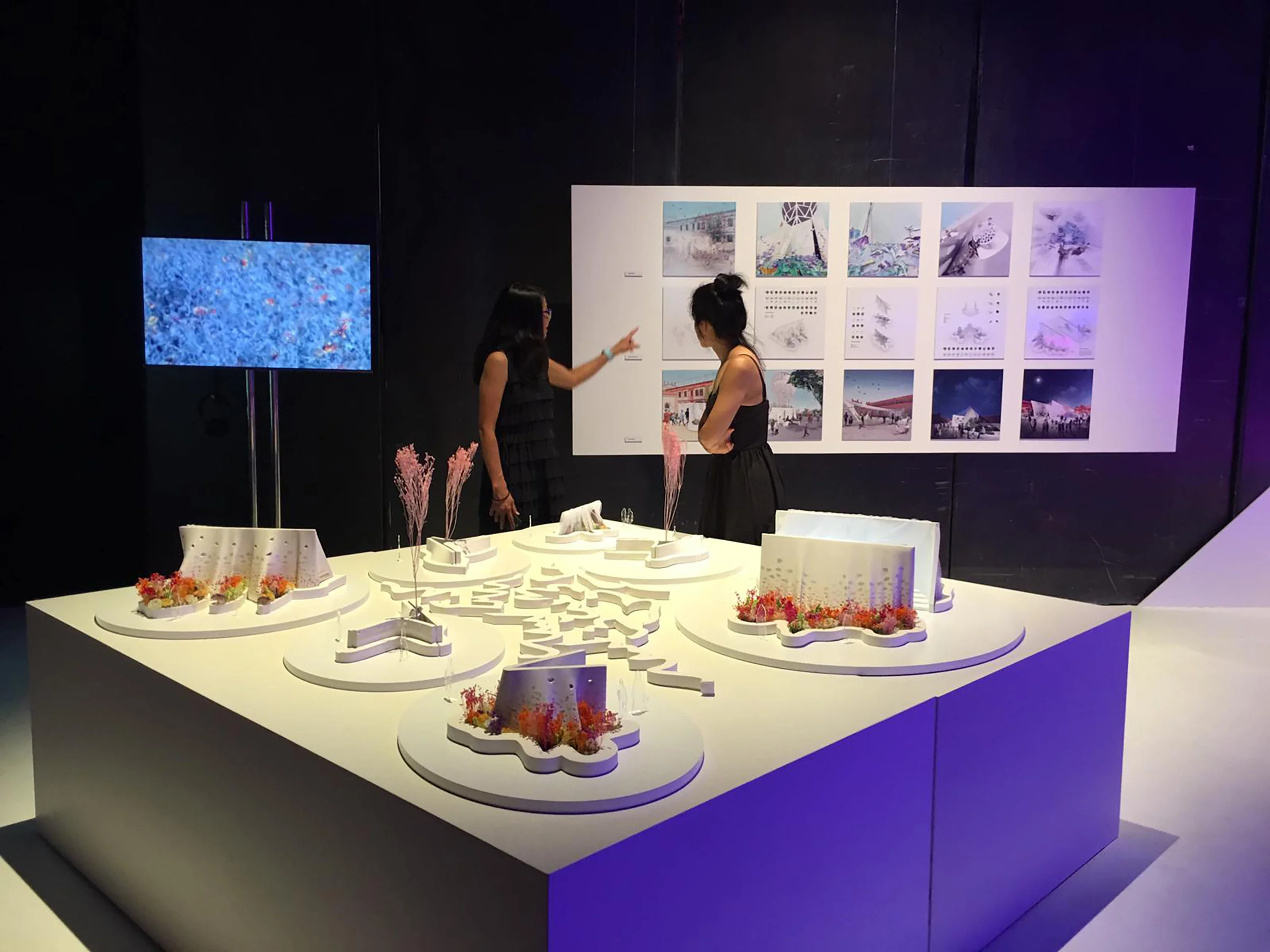






Hidden in Plain Sight is proposal for a series of urban furnishings that aim to amplify and bring awareness to various forms of urban “life” through visual, tactile and ecological means. The project is designed to support an inclusive web of interdependent species, both human and non-human.
Year: 2019
Authorship: Double Happiness - Nerea Feliz (Nerea Feliz Studio) & Joyce Hwang (Ants of the Prairie)
Project Assistants: Sara Svisco, Zach Fields, Sasson Rafailov (University at Buffalo, State University of New York); Robert Anderson, Hailey Brown, Raymond Castro, Richard Gagle, Gabriel Gatica, Francisco Resendiz Carrill, (The University of Texas at Austin).

Human experience
Hidden in Plain Sight aims to enhance our own experience of public space. It is conceived of as a series of urban furnishing prototypes that bring shading, lighting, vegetation, and seating into the public sphere. This family of prototypes operates between and across scales within the urban interior of the public outdoor spaces of Matadero Madrid– from the scale of humans to the scale of the insect. They are composed as a series of urban rooms, walls, and furniture that can function as individual units or in aggregation – setting the stage for public programming, such as film screening and small concerts, while also introducing a sense of interiority and cultivating urban intimacy between the environment and the life forms that inhabit it.

Multi-species inhabitation
The project seeks to make visible the under-acknowledged world of non-human species -- particularly insects -- as active participants of urban life, by attracting and magnifying their presence in our shared urban spaces. While we often think of cities as human-centered territory, urban environments host a multitude of living beings, with insects and arthropods among the most plentiful and diverse populations. Insects are a significant part of our ecosystem, serving as pollinators, seed dispersers, decomposers, and as a food source for other species such as bats and birds. Various insect species are also bioindicators, or “living barometers” of environmental conditions. According to a recent study, 40% of insect species are in danger of extinction in the coming decades due to the extensive use of pesticides and climate change.
To support and cultivate beneficial – and spectacular -- insect populations, we have identified some of the most common butterflies and moths species in the Casa de Campo and Madrid Rio area such as Chupaleches, Ortiguera, Blanca de la Col or Gran Pavon de Noche, among others. The urban prototypes incorporate planting scenarios to accommodate both catepillars and butterflies; mesh-enclosed planters protect caterpillars from predators, while open planting beds house brightly-colored wildflowers for nectar-seeking butterflies.

Mutualism in the urban environment
Hidden in Plain Sight deploys visual tactics to both enhance insect habitability, while also provoking human curiosity through new spatial and perceptual experiences. Stemming from the fascinating world of insect vision and perception, the project uses colors, patterns, and light toward both insect and human benefit. To provide a sense of camouflage for butterflies, patterns are imprinted on the prototypes’ curving walls, evoking the double-sidedness of butterfly wings, and color-coordinating with adjacent wildflowers. To promote habitability by birds, bats, bees, and other insects, distinct ‘pods’ are fabricated and inserted into the upper portions of the prototype walls, adding a textural and volumetric dimension to the prototypes’ undulating surfaces. At night, the design uses “positive phototaxis” and ultraviolet black light to attract insects, a phenomenon that can be video-recorded and projected as a form of spectacle.

Hidden in Plain Sight concept models at the Cyborg Garden "Eco-visionaries " exhibition in Matadero Madrid. Hidden in Plain Sight is part of the Cyborg Garden, that together with the Eco-visionaries exhibition, is on view at Matadero Madrid from June 13 - Oct. 6, 2019. It is the first in a series of installations and developments over the course of several years and reveals how artists, architects, and designers grapple with complex facets of the environmental crises, including the extinction of species, deforestation, air pollution and the need to imagine new food systems.

The project is part of a broader initiative, Matadero Mutant Action, which seeks to frame global planetary changes as a challenge that is as much cultural and political as scientific and technological. Directed by Matadero Madrid and curated by elii [architecture office], the project is part of a collective “Cyborg Garden,” a group of projects being developed to turn the outdoor spaces of Matadero Madrid complex into a laboratory for testing nature-based solutions that will culminate in a series of replicable prototypes capable of raising the resilience of this public space in Madrid.
This initiative is supported by Plataform-A, an interdisciplinary network made up of the Technical University of Madrid (UPM) through its center itdUPM (Innovation and Technology for Human Development Centre), Madrid City Council, through its Environment and Mobility Division, and Matadero Madrid. The platform brings together an international group of artists, designers, researchers, thinkers, scientists, engineers, architects and many other agents around artistic research and production to tackle the climate crisis.